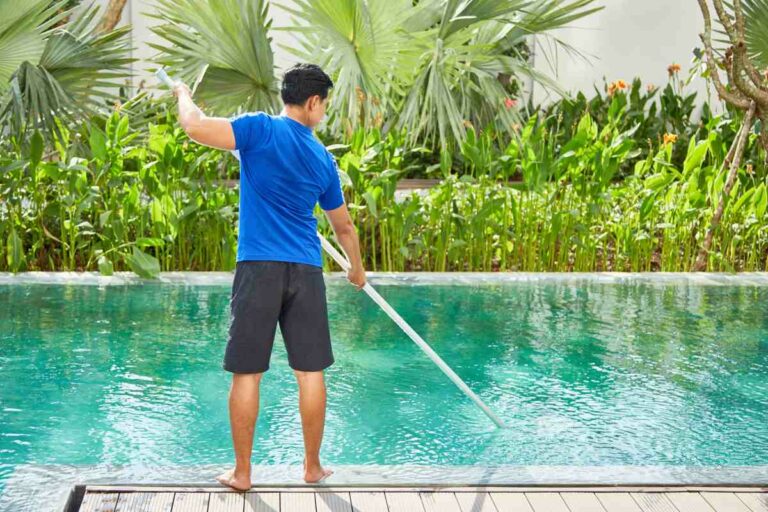A Beginner’s Guide to Pool Equipment Repair and Maintenance
Owning a pool is a joy, but keeping it in peak condition requires regular maintenance and the occasional repair. Understanding how to troubleshoot and maintain your pool equipment can prevent larger issues from developing and ensure that your pool operates smoothly throughout the year.
In this guide, we’ll dive into some key aspects of pool equipment repair, including how to maintain essential components like pumps, filters, and heaters. Whether you’re a new pool owner or simply looking to refresh your knowledge, these tips will help you stay on top of maintenance and prolong the lifespan of your pool equipment.
1. Understanding the Role of Pool Equipment
Before diving into repairs, it’s essential to understand the function of each piece of pool equipment. Your pool’s major components include the pump, filter, and heater, each playing a critical role in maintaining water quality and comfort.
- Pool Pump: The pump circulates water through the filter, heater, and other systems to keep the pool clean and clear of debris.
- Pool Filter: This component removes dirt, debris, and microscopic particles from the water, ensuring it stays clear and safe for swimming.
- Pool Heater: For those who enjoy swimming year-round, the pool heater keeps the water at a comfortable temperature, especially during cooler months.
When one of these components breaks down, it can impact the overall performance of your pool. Learning basic repair and maintenance practices will help you avoid downtime and keep your pool operating efficiently.
2. Common Pool Pump Issues and Repairs
The pool pump is the heart of your pool’s circulation system, and keeping it in good working order is crucial for maintaining water quality. Common problems with pool pumps include air leaks, overheating, and poor water flow.
a. Air Leaks in the Pump
If air gets into the pump, it can cause poor circulation and decreased efficiency. The most common cause of air leaks is a cracked or improperly seated pump lid O-ring, which prevents an airtight seal. If you notice bubbles in the pool or hear a loud gurgling noise from the pump, it could be due to an air leak.
How to fix it:
- Turn off the pump and inspect the O-ring for cracks or damage. If necessary, replace the O-ring and ensure it’s properly lubricated and seated before tightening the pump lid.
- Check the suction line for any visible cracks or leaks that could also allow air into the system.
b. Overheating Pump Motor
A pool pump motor that frequently overheats may be caused by blockages in the pump or filter, or simply an old, worn-out motor. If the motor is overheating, it may shut down unexpectedly, impacting the pool’s circulation.
Solution:
- Clean the pump basket regularly to ensure there’s no debris blocking water flow.
- Check the filter to ensure it’s not clogged, as this can cause the pump to work harder than necessary.
- If the motor is old, consider replacing it with an energy-efficient model to improve performance and reduce overheating.
c. Low Water Flow
Low water flow can be caused by clogged skimmers, a dirty filter, or air in the system. If your pool pump isn’t pulling enough water through the system, it may lead to stagnant water and inadequate filtration.
How to resolve:
- Clean out skimmer baskets and ensure there’s no blockage in the plumbing.
- Backwash or clean the pool filter as necessary to remove any dirt and debris that could be restricting water flow.
By addressing these common pool pump issues, you can keep your pump running efficiently and avoid more costly repairs down the road.
3. Pool Filter Maintenance and Troubleshooting
The pool filter is responsible for removing dirt, algae, and other impurities from the water, so keeping it in good condition is key to maintaining crystal-clear water. However, filters can become clogged or worn over time, reducing their effectiveness.
a. Backwashing and Cleaning the Filter
Most filters, including sand and diatomaceous earth (DE) filters, need to be backwashed regularly to flush out dirt and debris that have accumulated. For cartridge filters, removing the cartridge and cleaning it with a hose is necessary to maintain performance.
How to backwash a filter:
- Turn off the pump.
- Set the filter valve to “backwash” and turn the pump back on.
- Allow the water to run until it appears clear, then turn off the pump again.
- Reset the filter valve to the “filter” position and resume normal operation.
For cartridge filters, rinse the cartridge thoroughly with a garden hose to remove dirt and grime. If the cartridge is heavily soiled, you may need to soak it in a cleaning solution before rinsing it again.
b. Signs of a Worn-Out Filter
Over time, filters can wear out and lose their effectiveness. If you notice that your pool water remains cloudy even after cleaning the filter, or if the pressure gauge on your filter consistently reads high, it may be time to replace the filter medium (sand, DE, or cartridge).
Routine maintenance of your pool filter will help ensure that your water stays clean and clear, reducing the need for chemical treatments and prolonging the life of your pool equipment.
4. Pool Heater Maintenance for Comfortable Swimming Year-Round
For many pool owners, a reliable pool heater is essential for extending the swimming season into cooler months. However, pool heaters can develop issues over time, such as reduced heating efficiency or complete failure.
a. Maintaining Your Pool Heater
Regular maintenance of your pool heater will help keep it functioning efficiently. This includes checking for debris around the heater, as leaves and dirt can block airflow and reduce heating performance.
Steps to maintain your pool heater:
- Inspect the heater’s burners to ensure they’re clean and free of soot or debris.
- Check for any obstructions in the exhaust or ventilation system that could affect the heater’s performance.
- Have a professional inspect the heater annually to ensure all components are in good working condition.
b. Common Pool Heater Issues
- Low Heat Output: If your pool heater isn’t heating the water effectively, it could be due to a clogged filter or insufficient water flow. Cleaning the filter and ensuring the pump is working properly can often resolve this issue.
- Heater Shutting Off: If the heater frequently shuts off, there may be a problem with the temperature sensor, pressure switch, or electrical connections. Consult a professional to diagnose and repair these issues.
Keeping your pool heater well-maintained will not only ensure comfortable swimming but also prevent the need for expensive repairs or replacements.
5. When to Call a Professional
While many pool equipment repair tasks can be handled by pool owners, there are times when it’s best to call in a professional. If you’re dealing with electrical issues, complex plumbing problems, or major equipment failures, it’s always safer to rely on the expertise of a certified pool technician.
Here’s when to call a professional:
- If your pool pump is making unusual noises that you can’t resolve with basic maintenance.
- When your pool heater is malfunctioning and basic troubleshooting hasn’t solved the problem.
- For major repairs to your filter or plumbing system that require specialized tools or knowledge.
By knowing when to handle repairs yourself and when to call a pro, you’ll ensure that your pool remains in excellent condition without taking unnecessary risks.
By staying on top of pool equipment repair and maintenance, you can enjoy a crystal-clear pool and a comfortable swimming environment throughout the year. And when you need professional assistance, working with a trusted pool contractor like POOL-ology ensures that your pool remains in top shape, offering you years of enjoyment.
Conclusion
Maintaining your pool equipment is essential for keeping your pool running smoothly and avoiding costly repairs. From addressing common pool pump issues to keeping your filter clean and maintaining your heater, a little proactive care goes a long way.





